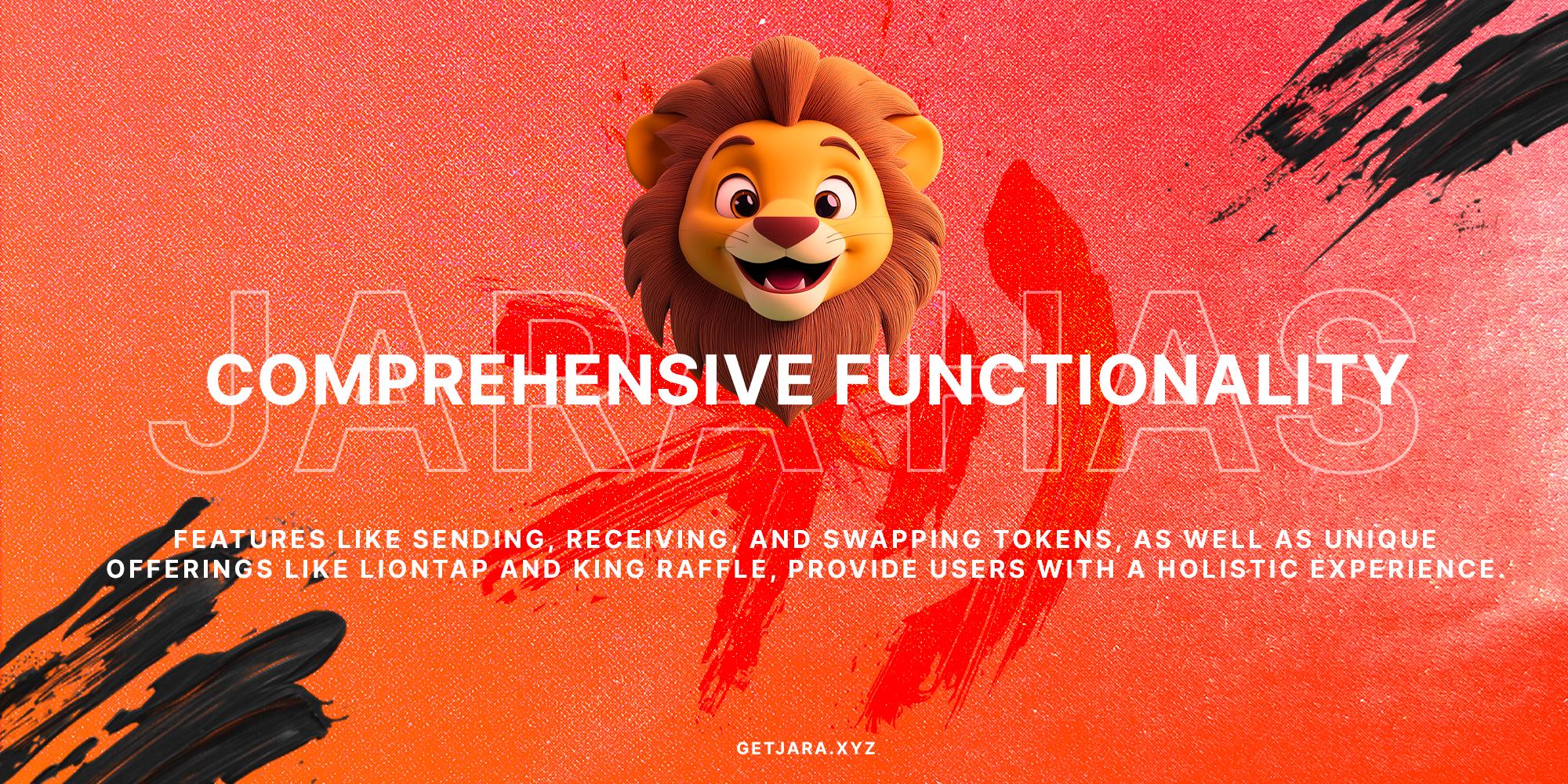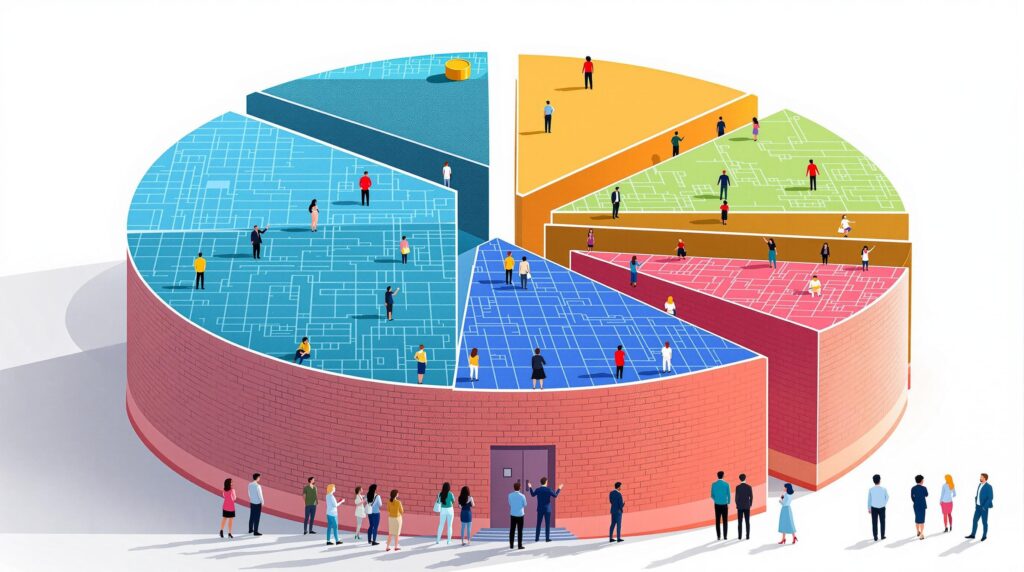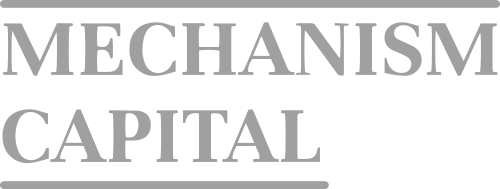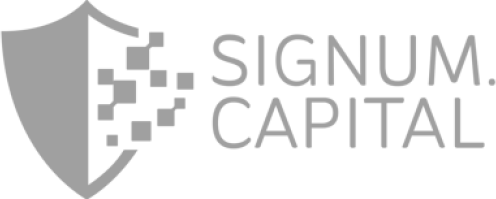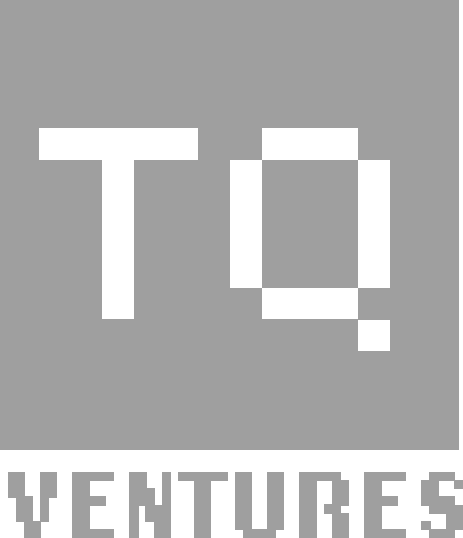Unlocking Liquidity for Real-World Assets
In the ever-evolving landscape of modern finance, tokenizing real-world assets (RWA) has emerged as a groundbreaking way to enhance market liquidity. But what exactly does this mean, and why should you consider it for your investment strategy? Let’s delve deeper into this fascinating world.
What is RWA Tokenization? RWA tokenization involves converting physical assets into digital tokens, allowing them to be traded more efficiently on blockchain platforms.
Imagine you own a luxury apartment. Traditionally, selling such property could be a long, cumbersome process involving real estate agents, legal paperwork, and several months of waiting. Now, consider this asset as a digital token that can be bought or sold effortlessly on a blockchain platform. This not only speeds up the transaction but also makes it possible for you to sell a fraction of your asset instead of the entire property.
The Power of Tokenization
- Fractional Ownership: By converting an asset into digital tokens, fractional ownership becomes a reality. This means an asset like commercial real estate can be divided into smaller shares, making it accessible to a broader array of investors.
- Blockchain Liquidity: Placing assets on a blockchain ensures they become part of a liquid market, where they can be traded seamlessly, enhancing liquidity which is crucial for investors looking for easy entry and exit points.
- Market Accessibility: Traditionally, investing in high-value assets like art or real estate was reserved for the wealthy. With tokenization, a wider population can partake in investment opportunities previously out of reach.
In Africa, where investment opportunities are plentiful but often lack accessibility, the introduction of tokenized assets can play a significant role in democratizing wealth. Through platforms like $JARA, bridging global capital to African assets becomes feasible, directly contributing to the continent’s economic empowerment.
Impact on Investment Strategies
From an investment strategy perspective, tokenized assets offer unique advantages. Consider the following:
- Diversification Potential: By investing in various tokenized assets, investors can build diverse portfolios that mitigate risks associated with single-asset investments.
- Portfolio Fluidity: Thanks to enhanced liquidity, adjusting portfolios in response to market trends becomes a smoother process.
- Access to Exclusive Markets: Tokenization opens doors to investment opportunities in emerging markets like Africa, not typically available to non-institutional investors.
It’s important to note that the potential for market manipulation decreases with blockchain’s transparent nature, providing a security level unprecedented in traditional markets. This transparency enhances trust and makes it easier for investors to verify asset histories and make informed decisions.
The Jara Advantage: As an integral part of the Jara ecosystem, $JARA token holders can participate in governance, earn rewards, and benefit from a growing digital economy poised to exceed $200 billion.
The future of asset tokenization is bright, and Jara stands at the forefront of this transformative movement. By enabling seamless cross-border transactions, Jara enhances global access to African investment opportunities, promising a new era of financial inclusion.
Conclusion
In a world where traditional boundaries are being redefined by technology, tokenizing real-world assets is not just a trend but a shift in how we perceive and manage investments. For those ready to embrace the digital future, the benefits of liquidity, accessibility, and diversification make tokenization a promising frontier. So, are you ready to unlock the potential of your assets?
Enhancing Transparency and Trust
Tokenizing real-world assets (RWAs) is like turning a bulky paper trail into a sleek digital record. So, what does that mean for transparency and trust in transactions? Let’s explore!
When you tokenize assets using blockchain technology, you create an immutable ledger that stores every transaction detail. Imagine a digital diary that can’t be altered or falsified—this is what blockchain offers.
What is blockchain transparency? Blockchain transparency means every transaction is recorded in a visible and tamper-proof manner, building trust and efficiency in asset trading.
Transparency is the first key ingredient in building trust among investors and stakeholders. If buying shares in a company, wouldn’t you want to know the entire transaction history before diving in? Tokenization provides that exact visibility, turning what’s often hidden in traditional systems into an open book. Tokenized stocks are taking the lead here, showing how equity markets can become more transparent. With this, investors and businesses alike can track the ownership and purchasing history of any asset, increasing confidence and trust in transactions.
Moreover, secure trading becomes the norm rather than the exception. Reducing fraud in asset transactions is crucial, and blockchain’s immutable nature ensures no sneaky manipulations go undetected. Each change, each transfer is locked within the blockchain, visible to all authorized parties.
- Immutable Records: Every transaction, from the purchase to sale, is etched into a digital stone, creating an unchangeable record.
- Secure Trading: With blockchain, asset transactions are not only monitored but also shielded from unauthorized alterations.
- Enhanced Investor Confidence: When investors can see exactly what happened and when, they’re more likely to invest confidently.
- Streamlined Processes: By replacing traditional intermediaries with smart contracts, processes are automated, reducing human error and speeding up transactions. Explore smart contracts in tokenization.
This move towards transparency is a game-changer for the African market too. By providing clear and accessible information, tokenization facilitates [financial inclusion](https://getjara.xyz/how-tokenized-rwas-can-unlock-financial-inclusion-in-emerging-markets) in emerging markets, pulling down barriers that have historically kept many investors at bay. Everyone—from individual traders to large institutions—stands to gain from this clarity and security.
“Jara- Unlocking the Future to Africa’s Crypto Ecosystem.”
Join this new era of clear, secure, and trustworthy asset management with Jara’s technology. We are setting the stage for a trusted economy where transactions aren’t just safe—they’re revolutionary.
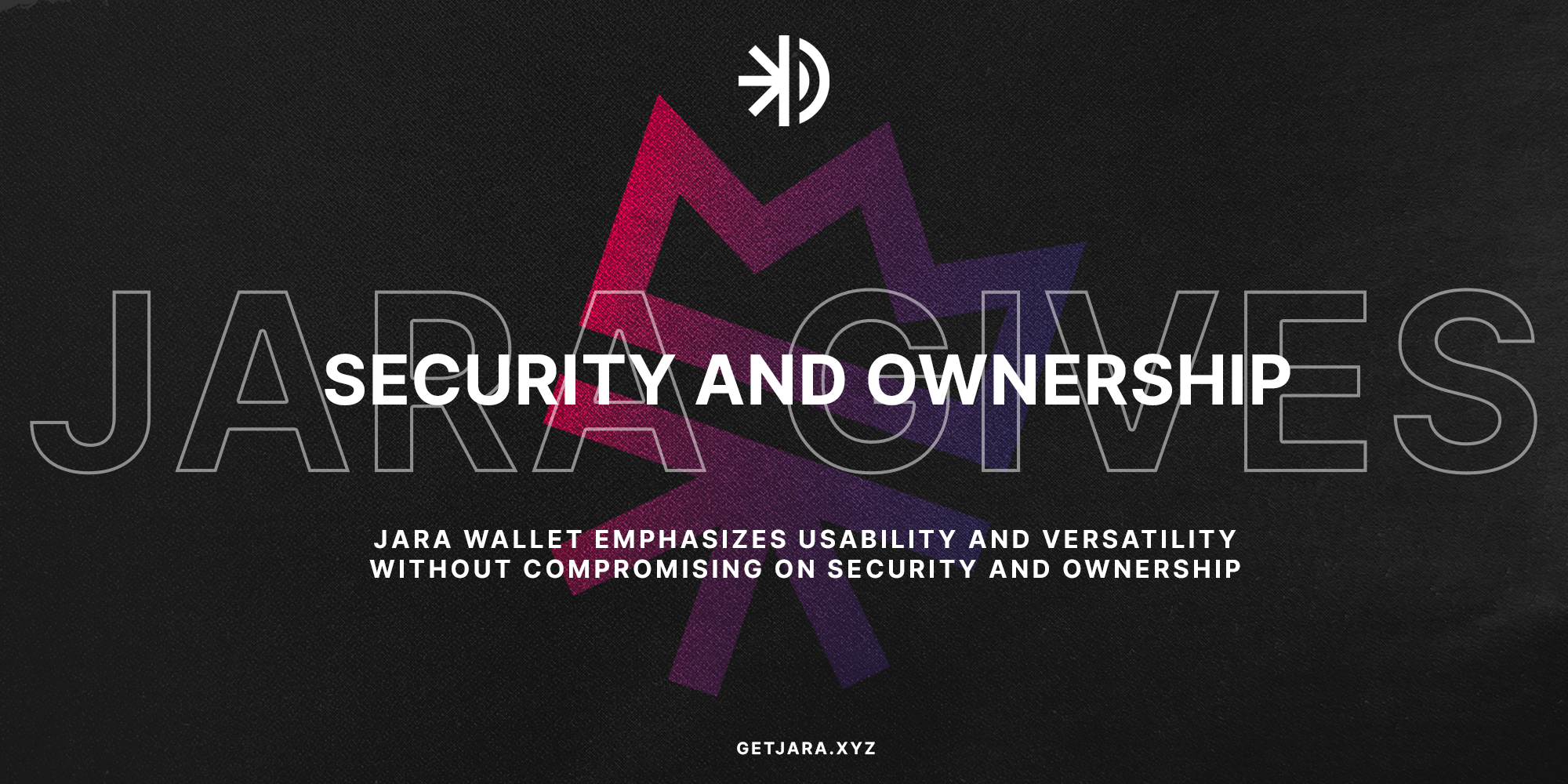
Cost-Effective Asset Management
In today’s fast-paced financial landscape, managing assets efficiently is crucial. One of the standout benefits of tokenizing real-world assets (RWA) is the reduction in operational costs. By leveraging digital transformation, tokenization minimizes the need for traditional middlemen and administrative hurdles, leading to substantial cost savings. But how does this process work, and why is it so effective?
What is cost-effective asset management through tokenization? Tokenization of real-world assets involves digitizing assets, thus reducing the reliance on paper-based processes and intermediaries, leading to cost savings and increased asset management efficiency.
By converting physical assets into digital tokens on a blockchain, organizations can eliminate the extensive paperwork historically associated with asset management. This digital shift not only speeds up transactions but also significantly cuts down the potential for fraud by providing a secure and immutable record of ownership and transactions. Imagine saving both time and money by embracing a method where every element of a transaction is seamlessly automated and recorded on a transparent platform.
Reducing Intermediation Costs
Traditional processes involved a myriad of intermediaries—think brokers, conveyancers, and bankers—each adding their own fee to the transaction cost. With tokenization, these layers are stripped away. Digital tokens act as direct representations of assets, meaning buyers and sellers can transact more directly without having to pay for the overhead of third-party services. This streamlined process benefits investors and asset managers alike by maximizing their returns on investment.
- Smart Contracts: These blockchain-based contracts automate the trading process, executing transactions when predefined conditions are met, eliminating the need for costly human oversight.
- Enhanced Liquidity: Tokenization permits fractional ownership, making it easy to buy and sell small portions of assets, thus enhancing liquidity and reducing costs associated with large capital requirements.
- Efficient Scaling: Digital platforms allow for easy scaling of operations without a proportional increase in cost, providing a more dynamic approach to asset management.
Further strengthening this cost-effective model is Jara’s groundbreaking approach to tokenization. At Jara, we use blockchain to seamlessly integrate digital tokens into existing financial systems. This integration cuts down significantly on costs while providing a platform that emphasizes security, speed, and scalability.
Automated Processes for Enhanced Efficiency
Imagine a world where processes that once took weeks due to paperwork and approvals can now be completed in minutes. This is the power of automated processes enabled by tokenization. Automation not only reduces human error but also ensures that everything from asset valuation to transaction execution can happen faster and cheaper.
How do automated processes aid asset management? Automated processes in tokenization improve efficiency by executing trades and managing records without human intervention, thus reducing the possibility of errors and minimizing operational costs.
The reduction in manual intervention leads to fewer errors, less time spent on corrections, and overall greater accuracy in transactions. This is particularly crucial for real-world assets management where accuracy and legitimacy are paramount. For instance, smart contracts automatically execute transactions once conditions are met, such as the transfer of a token indicating asset ownership, all without requiring a human to oversee each step.
Furthermore, the reliance on a decentralized ledger means all transactions are transparent and traceable, providing peace of mind to all parties involved. This directly ties into cost savings, as processes like auditing and compliance are more straightforward and less resource-intensive.
Conclusion
To adapt to the rapidly evolving financial ecosystem, embracing tokenization for cost-effective asset management is not just an option but a necessity. By removing unnecessary intermediaries and leveraging automated processes, organizations can achieve unprecedented efficiency and cost savings. Jara stands at the forefront of this revolution, guiding investors towards smarter, more efficient, and more profitable asset management solutions.
Global Accessibility and Decentralization
In the ever-evolving world of finance, tokenizing real-world assets (RWA) is becoming a transformative force, particularly in emerging markets such as Africa. Through this innovative approach, tokenized assets offer unprecedented global accessibility, allowing individuals from all regions to tap into diverse investment opportunities. This capability undermines traditional geographical barriers, opening doors for investors and fostering financial inclusion on a global scale. Whether you’re in Lagos or London, tokenization offers a chance to participate in markets that were previously out of reach.
What does global accessibility in tokenization mean? Global accessibility allows investors from any location to participate in diverse markets through blockchain technology, eliminating traditional geographical restraints.
Bridging the Gap with Decentralization
One of the most profound impacts of tokenization is its ability to leverage decentralized ownership. By moving away from central authorities, such as banks or government agencies, tokenization decentralizes asset ownership and management. This shift not only democratizes investment but also significantly reduces the reliance on intermediaries, lowering transaction costs and increasing efficiency.
- Elimination of Intermediaries: Decentralization removes the need for multiple intermediaries in transactions, saving time and money.
- Secure Transactions: The blockchain’s decentralized nature ensures that all transactions and ownerships are transparent and secure against fraud.
- Autonomy in Investments: Decentralization empowers investors with more control, enabling them to make informed, independent decisions.
Decentralization is not only about removing the gatekeepers who often make investment processes lengthy and expensive but also about giving power back to the individuals. This is especially vital for regions with underdeveloped financial infrastructure, providing an opportunity to leapfrog into the future of finance with systems like Jara’s. By employing fractional ownership, even those with limited capital can engage with high-value assets.
“Jara empowers the African market by harnessing the power of tokenization, ensuring that every individual, regardless of their location, has the opportunity to engage in the global economy.”
Financial Inclusion Through Tokenization
Financial inclusion is a cornerstone of tokenization’s promise. By embracing a tokenized future, Africa stands to benefit immensely. Traditional financial systems often exclude millions due to geographical, economic, or infrastructural limitations. Tokenization changes this narrative by streamlining access to a wide array of asset classes—from real estate to commodities. As noted in industry discussions on the best blockchains for tokenization, the technology enables efficient, secure, and expansive market participation.
| Benefit | Impact |
|---|---|
| Broader Access | Investors globally can access local markets, narrowing the economic disparity between regions. |
| Equitable Opportunities | Tokenization allows for the democratization of asset ownership, providing fairer financial opportunities. |
| Enhanced Participation | Individuals can engage in markets with lower entry barriers, promoting diverse economic activity. |
The liquidity provided by tokenized markets is key to unlocking Africa’s potential, creating a robust platform for economic growth and sustainability. Through platforms like Jara, individuals previously excluded from investment opportunities can now participate effectively, building wealth and contributing to their community’s development.
As Africa continues to urbanize and digitalize, the overlap of traditional and tokenized economic systems will play a crucial role in shaping the continent’s future. With real-world asset tokenization, we see a burgeoning landscape where economic participation becomes a reality for all.
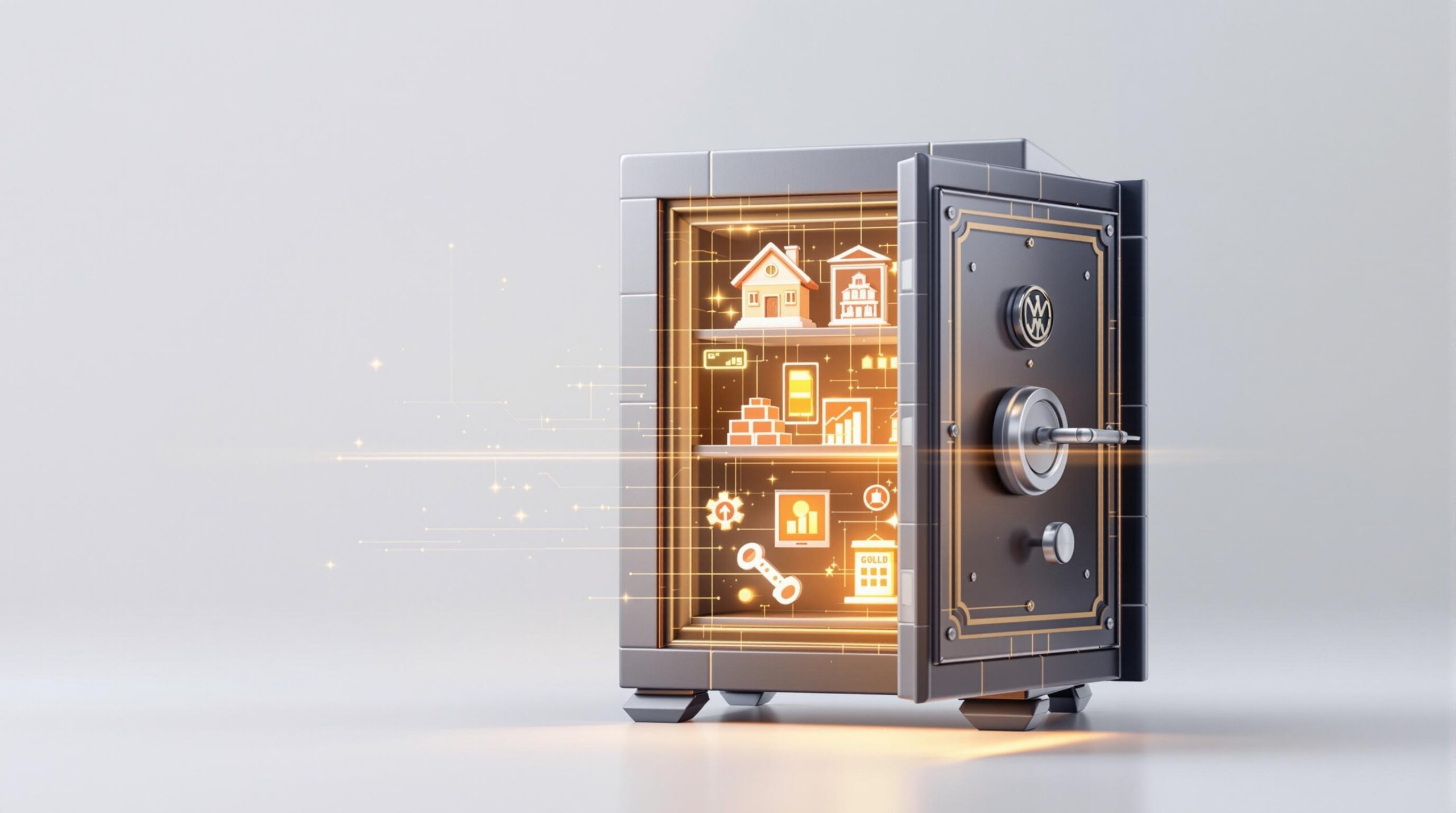
How does tokenizing real-world assets improve liquidity?
Tokenizing real-world assets improves liquidity by converting tangible assets into digital tokens, making them easily tradable on blockchain platforms. This process, known as fractional ownership, allows investors to buy and sell smaller portions of assets, enhancing market liquidity and accessibility. This democratizes investment opportunities and helps unlock cash flow in traditionally illiquid markets.
What role does blockchain play in enhancing transparency for tokenized assets?
Blockchain technology enhances transparency for tokenized assets by providing a secure, immutable ledger that records all transactions and ownership histories. This decentralized nature of blockchain ensures that all stakeholders have access to the same accurate and trustworthy data, which significantly boosts confidence in the transactions involved. Keywords related to blockchain transparency and immutable records frequently appear in discussions about tokenization benefits.
Can tokenization reduce the costs associated with asset management?
Yes, tokenization can significantly reduce costs associated with asset management. By digitizing assets, tokenization minimizes the need for intermediaries and lowers administrative expenses. Automated blockchain processes replace traditional paperwork, leading to efficiency and cost savings in asset transactions and management. This cost-effective nature of tokenized assets is a compelling reason for businesses to consider this modern approach.
How does tokenization promote global accessibility and decentralization in investments?
Tokenization promotes global accessibility by removing geographical constraints and enabling worldwide participation in diverse markets. It allows investors from any location to access opportunities previously confined to local or regional spaces. Decentralization through blockchain further reduces reliance on central authorities, fostering a democratized environment for asset ownership and promoting financial inclusion on a global scale.
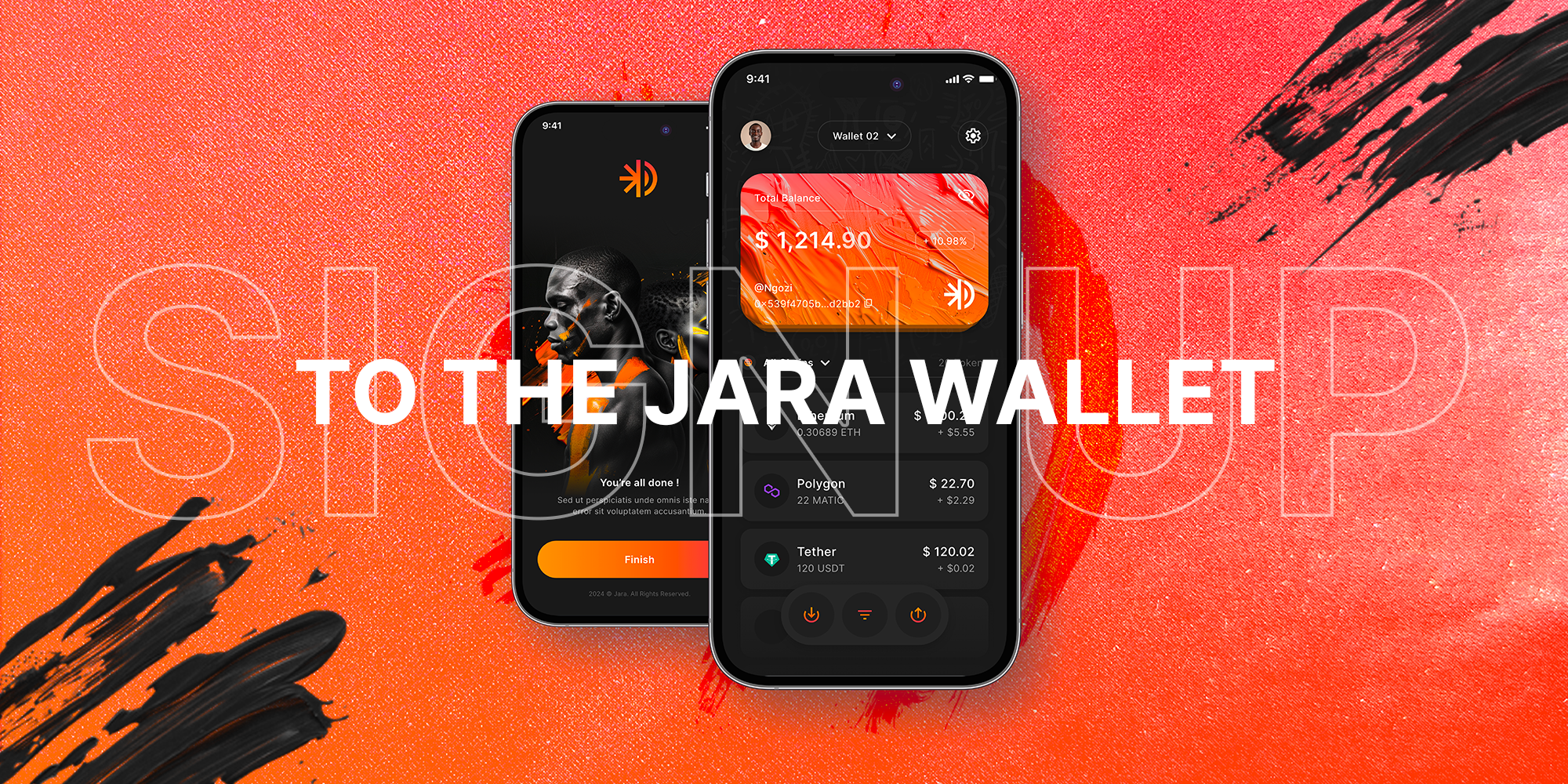
Further Reading: Explore Similar Pages
Dive deeper into the fascinating world of real-world asset tokenization with our selection of related articles below.

Unlock the Future of Investment with Jara
Want to be at the forefront of financial innovation? Experience firsthand the transformative power of tokenizing real-world assets with Jara Wallet. By downloading our app, you’re not just joining a community; you’re opening doors to a world of limitless investment potential in the African market.
“$JARA: Bridging Global Capital to African Assets”
Ready to get started? Download the Jara Wallet app for Android or for iPhone now to ensure you don’t miss out on incredible opportunities.
Stay connected and up-to-date with the latest developments in asset tokenization by following us on social media:
- Facebook: Engage with our community and learn from experts.
- Twitter: Get instant updates and industry news.
- LinkedIn: Connect with professionals and expand your network.
Your journey into the world of blockchain-enriched finance starts here. Join us today and make a lasting impact on the global and African financial landscape.
Understanding Personal Injury Law: Key Insights
What is Personal Injury Law?
- Definition: Personal injury law involves legal disputes where an individual suffers harm from an accident or injury, and someone else might be legally responsible.
- Common Cases: These cases may include car accidents, slip and fall incidents, medical malpractice, and more.
Tip: Knowing the basics of personal injury law can help you protect your rights if you are injured.
The Process of Filing a Personal Injury Claim
- Seek Medical Attention: Immediate medical care should be a priority to ensure health and provide documentation.
- Consult a Personal Injury Lawyer: A lawyer can help evaluate your case and advise on legal options.
- Gather Evidence: Important evidence includes medical reports, witness statements, and photos of the scene or injuries.
- File a Claim: Your lawyer will help you file a claim with the at-fault party’s insurance company.
- Negotiate Settlement: Most cases are settled through negotiation without going to trial.
“Your well-being, our priority” — Trust us to guide you through the legal process with compassion and expertise.
Common Personal Injury Compensation Types
- Medical Expenses: Covers current and future medical costs due to injury.
- Lost Wages: Compensation for income lost while recovering from injuries.
- Pain and Suffering: Financial remuneration for physical pain and emotional distress.
- Property Damage: Reimbursement for damage to personal property.
Important: Document all expenses related to your injury to strengthen your claim.
Choosing the Right Personal Injury Lawyer
Qualities to Look For in a Personal Injury Lawyer
- Experience: Ensure the lawyer has significant experience in personal injury cases.
- Communication Skills: Clear and frequent communication is crucial for your peace of mind.
- Proven Track Record: Look for a lawyer with a history of successful verdicts and settlements.
- Client Testimonials: Read reviews and testimonials to gauge previous clients’ satisfaction.
“Our success stories speak for themselves” — Let us be your advocate in your time of need.
Questions to Ask a Potential Lawyer
- Experience: “How many years have you been practicing personal injury law?”
- Case Handling: “How will you handle my case specifically?”
- Fee Structure: “What is your fee structure, and do you work on a contingency basis?”
- Case Outcomes: “Can you provide examples of similar cases you’ve won?”
